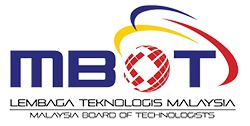Development of a Wearable Human Fall Detection System
Keywords:
Fall Detection, Wearable Device, Threshold-based Method, Internet of Things (IoT), Database, Big Data, Data Analytics, Google Cloud Messaging (GCM).Abstract
Fall contributes for over 80% of injury-related hospitalisation, especially amongst the elderly. A long lie due to a fall may lead to other health complications if medical intervention does not take place in a timely manner. Hence, a fall detection system that employs a wearable detector is important to detect the fall automatically. In this study, an accelerometer and gyroscope sensors were installed in a wearable fall detector. A fall detection algorithm was developed using MATLAB. This algorithm will extract features from the signal sent by the sensors and conduct a series of decision-making and classification process to determine whether a fall has actually occurred. The accuracy of the fall detection algorithm was determined to be at 98.41%. The detected fall will be notified to the elderly person’s smart phone via Bluetooth and the smart phone will send an emergency message to the caregiver’s smart phone via the Google Cloud Messaging (GCM) system. The smart phone will also update the database, with regards to the fall event. This system embraces the Internet of Things (IoT), big data, and data analytics concepts as well as allows data-driven healthcare to be developed.





